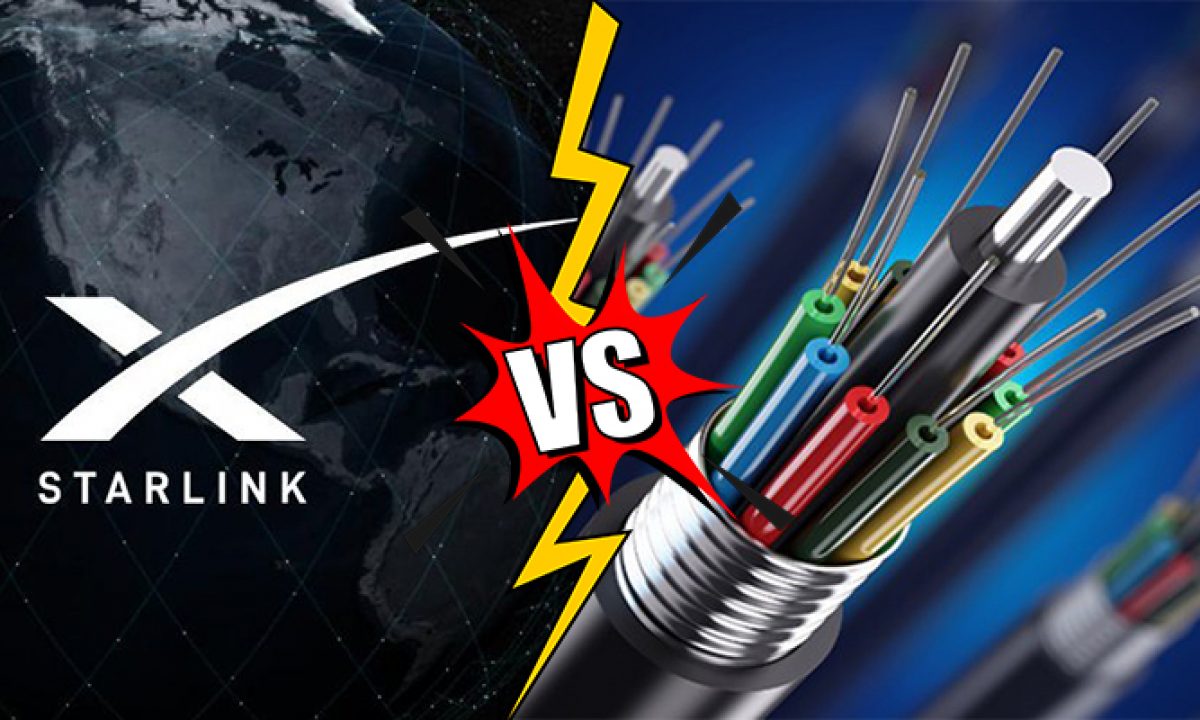
Fibre Optic vs. Satellite Internet: Which One is Faster?
Today, having a fast and reliable internet connection is no longer a luxury—it’s a necessity. Whether you’re streaming your favourite shows, attending Zoom meetings, or gaming online, the quality of your internet can make or break your experience. When it comes to choosing the right type of internet, two major contenders stand out: fibre optic and satellite internet. But which one is the best fit for your needs?
In this story, we’ll dive into the key differences between fibre optic and satellite internet, explore their pros and cons, and help you decide which one is best for your lifestyle.
Fibre optic internet is considered the gold standard for high-speed internet. It uses tiny strands of glass or plastic to transmit data as pulses of light, allowing for extremely fast data transfer speeds and low latency. Unlike traditional copper cables, which can degrade over distance, fibre optic cables are less susceptible to interference and can maintain high speeds over long distances.
Data Transmission: Data is sent as light signals through thin optical fibres, which are bundled together in cables.
Speed: Fibre optic internet can deliver speeds ranging from 100 Mbps to over 1 Gbps (1000 Mbps), making it one of the fastest options available.
Latency: It offers extremely low latency, which is ideal for activities like online gaming, video conferencing, and streaming in 4K or higher.
Lightning-Fast Speeds: Perfect for households with heavy internet usage or multiple users.
Low Latency: Ideal for real-time applications like gaming and video calls.
Reliable Connection: Less prone to weather-related disruptions compared to satellite.
Limited Availability: Fibre optic infrastructure is expensive to install, so it’s mainly available in urban and suburban areas.
High Installation Costs: Installing fibre optic cables can be costly, especially if your area isn’t already covered.
Satellite internet, on the other hand, relies on satellites orbiting the Earth to provide internet access. This type of internet is often the go-to option for rural and remote areas where traditional wired connections like fibre optic or DSL are unavailable.
Data Transmission: Data is sent from your device to a satellite dish installed at your location, which then communicates with satellites in orbit.
Coverage: Satellite internet can cover virtually any location on Earth, making it ideal for rural or hard-to-reach areas.
Latency: Because data has to travel to space and back, satellite internet tends to have higher latency than fibre optic connections.
Wide Coverage: Can reach places that are off the grid, where other types of internet are unavailable.
No Need for Physical Cables: Useful for areas where laying down infrastructure is not feasible.
High Latency: The time it takes for data to travel to space and back can cause delays, affecting activities like gaming and video calls.
Weather-Dependent: Satellite signals can be affected by weather conditions like rain or snow, leading to potential disruptions.
Data Caps: Many satellite internet providers impose data limits, which can be restrictive for heavy users.
| Feature | Fibre Optic Internet | Satellite Internet |
|---|---|---|
| Speed | Up to 1 Gbps or higher | Typically 25-100 Mbps |
| Latency | Extremely low | Higher due to signal distance |
| Availability | Limited to urban/suburban areas | Available almost anywhere |
| Reliability | Highly reliable | Affected by weather conditions |
| Installation Cost | Can be high | Moderate |
| Data Caps | Often unlimited | Frequently has data limits |

The choice between fibre optic and satellite internet largely depends on where you live and how you use the internet. Let’s break it down:
You live in an area where it’s available.
You need ultra-fast speeds for activities like streaming, gaming, or video conferencing.
You want a stable, low-latency connection with no data caps.
You live in a remote or rural area with limited internet options.
You need a connection that’s available virtually anywhere.
You’re okay with moderate speeds and occasional latency for basic browsing, email, and streaming.
In recent years, satellite internet has been evolving rapidly, thanks to ambitious projects like Starlink by SpaceX. Starlink aims to provide high-speed, low-latency internet to even the most remote corners of the globe by deploying thousands of low Earth orbit (LEO) satellites. Unlike traditional satellites that orbit at high altitudes, LEO satellites are much closer to Earth, reducing latency and potentially bringing satellite internet performance closer to that of fibre optics.
Speeds of up to 500 Mbps: While not quite as fast as fibre, it’s a significant improvement over traditional satellite internet.
Lower Latency: With latency as low as 20-40 milliseconds, it’s closing the gap with fibre connections.
Global Coverage: Ideal for rural and underserved areas, providing a reliable alternative where fibre isn’t an option.

The battle between fibre optic and satellite internet is far from over. Fibre optic remains the best choice for those who need ultra-fast, reliable internet and live in areas where it’s available. On the other hand, satellite internet is expanding its capabilities and is becoming a viable option for those living in remote regions.
As technology continues to advance, we may see a future where satellite internet rivals fibre optic in both speed and reliability. For now, the choice comes down to your location, budget, and internet needs. Whether you’re a city dweller craving gigabit speeds or someone living off the grid needing a lifeline to the online world, there’s an internet solution out there for you.
Have you tried both fibre optic and satellite internet? Share your experiences in the comments! And if you found this story helpful, don’t forget to share it with friends who are looking for the best internet options.

















